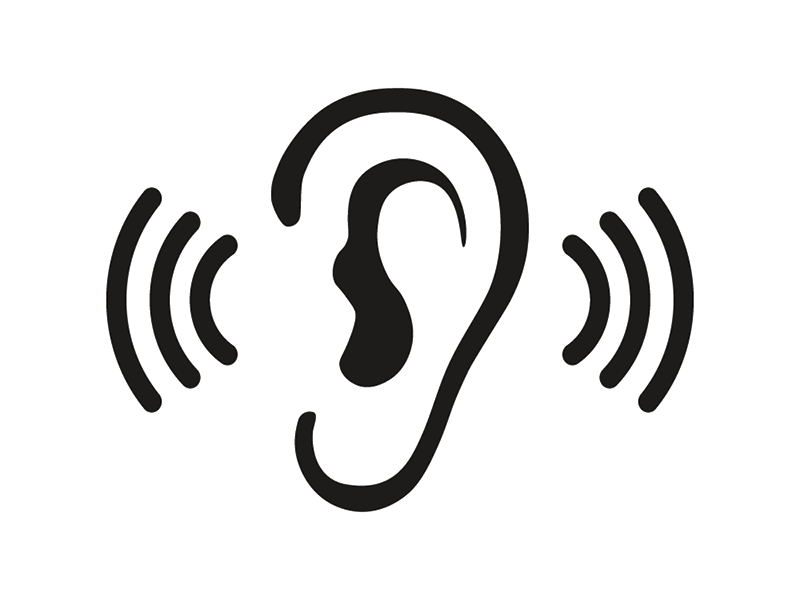




Verbal communication is an important method of communication between carers and individuals. Through regular conversations ideas can be exchanged and decisions can be made through a process of speaking and listening. Communication is therefore a two-way process. Ideas can be exchanged, and decisions made there and then.
If there is any confusion about what has been said, this can be clarified at the time so that everyone knows and understands exactly what has happened or is going to happen in the future.
Individuals will be able to find out about the treatment, procedures or care they need or will be needing in the future. Instructions can be given to other health and social care workers so that they know what their duties are. Additionally, activities can be carried out and problems solved, using speech as the method of communication. Co-production relies upon effective communication within teams.
Mae cyfathrebu geiriol yn ddull cyfathrebu pwysig rhwng gofalwyr ac unigolion. Bydd unigolion yn siarad â'i gilydd a chael sgyrsiau'n rheolaidd, gan dderbyn a rhoi gwybodaeth yn gyflym ac yn effeithiol. Dyma pryd y gellir cyfnewid syniadau a gwneud penderfyniadau yn y fan a'r lle.
Os bydd unrhyw ddryswch ynglŷn â'r hyn sydd wedi cael ei ddweud, gellir egluro hynny ar y pryd fel bod pawb yn gwybod ac yn deall beth yn union sydd wedi digwydd neu a fydd yn digwydd yn y dyfodol.
Bydd unigolion yn gallu dysgu am y driniaeth a'r gofal sydd eu hangen arnynt neu y bydd eu hangen arnynt yn y dyfodol. Gellir rhoi cyfarwyddiadau i weithwyr iechyd a gofal cymdeithasol er mwyn iddynt wybod beth yw eu dyletswyddau. Yn ychwanegol i hyn, gellir cyflawni gweithgareddau a datrys problemau, gan ddefnyddio siarad fel dull cyfathrebu. Mae cydweithrediad yn dibynnu ar gyfathrebu effeithiol rhwng y timau.

Within health and social care practice we sometimes need to adapt our method of communication to meet the needs of the individual we care for. We need to ensure we speak clearly and prevent using jargon or terminology that may be difficult for the individual to understand.
Active listening helps to maximise the communication interaction. It is important to show that workers are listening to the individual, and that they have heard and understood what has been said. Using reassuring smiles and eye contact ensures that individuals understand that workers are interested in what is being said.
Carers should use open body language and using gestures can also be helpful. Showing interest in what is being said encourages individuals to communicate more and can improve the level of detail they are prepared to give. Communication should not be rushed, as this may make an individual feel that they are not important, or that there is little respect for them.
O fewn maes iechyd a gofal cymdeithasol bydd angen ar adegau addasu dulliau cyfathrebu er mwyn cwrdd ac anghenion yr unigolyn sydd angen gofal. Mae’n rhaid siarad yn eglur, osgoi defnyddio jargon neu therminoleg a all fod yn anodd i’r unigolyn ei ddeall.
Mae gwrando gweithredol yn helpu i wneud y gorau o'r rhyngweithio wrth gyfathrebu. Mae'n bwysig i weithwyr ddangos eu bod yn gwrando ar yr unigolyn, a'u bod wedi clywed a deall yr hyn sydd wedi cael ei ddweud. Gall gwên galonogol a chyswllt llygaid sicrhau bod unigolion yn deall bod gan weithwyr ddiddordeb yn yr hyn y maent yn ei ddweud.
Dylai gofalwyr ddefnyddio iaith corff agored, a gall defnyddio ystumiau fod yn ddefnyddiol hefyd. Mae dangos diddordeb yn yr hyn sy'n cael ei ddweud yn annog unigolion i gyfathrebu mwy, a gall olygu eu bod yn fodlon rhoi mwy o fanylion. Ni ddylid rhuthro wrth gyfathrebu, oherwydd gall hyn wneud i unigolyn deimlo nad yw'n bwysig, neu nad yw'n cael ei barchu rhyw lawer.

Only about 10% of our communication is actually spoken, and through this two-way process of communication, health and social care workers are able to work with individuals and their families in order to ascertain what their needs are and what can be put in place to support them.
During this process, it is important that the individual is allowed to speak freely and not overly questioned as this can be overwhelming. Health and social care workers need to adapt their communication styles and techniques in order to ascertain information without putting the individuals under stress.
When aiming to discover how an individual wishes to communicate, it is important to choose the right moment and the right place. If something needs to be discussed in private with an individual, it is vital to ensure that the choice of venue is private and that no one feels uncomfortable about the possibility of being overheard.
Whilst friends and family can be helpful in this process, sometimes advocacy services are requested to help.
Dim ond tua 10% o'n cyfathrebu sydd ar lafar mewn gwirionedd, a thrwy’r broses gyfathrebu ddwyffordd hon bydd hyn yn galluogi gweithwyr iechyd a gofal cymdeithasol i weithio gyda unigolion a’u teuluoedd i ffurfio perthnasoedd a nodi eu hanghenion a’r hyn sydd angen ei wneud i’w cefnogi.
Yn ystod y broses hon, mae’n bwysig gadael i’r unigolion siarad heb gwestiynu gormod arnynt. Gall hyn ei llorio. Mae’n rhaid i weithiwyr iechyd a gofal cymdeithasol ystyried y gwahanol dechnegau y gellid eu defnyddio i gasglu gwybodaeth yn gywir ac yn effeithiol heb beri gormod o ofid i’r unigolion.
Wrth gael gwybod sut mae unigolyn yn dymuno cyfathrebu, mae'n bwysig dewis yr adeg gywir a'r lle cywir. Os oes angen trafod rhywbeth yn gyfrinachol ag unigolyn, mae'n hollbwysig sicrhau bod lleoliad preifat yn cael ei ddewis ac nad oes unrhyw un yn teimlo'n anghyfforddus ynglŷn â'r posibilrwydd y bydd rhywun arall yn clywed.
Er y gall ffrindiau a theulu fod yn gymorth yn y broses hon, ar adegau gall gwasanaethau eiriolaeth gael eu galw i helpu mewn rhai achosion.

Whichever way we choose to communicate, we must try to ensure that individuals who are receiving information can fully understand the information and make appropriate responses demonstrating their understanding. There may be times when a message is misinterpreted because barriers to the communication process have not been addressed.
These barriers might include:
At times communication barriers can be created when individuals misunderstand messages. For example, it can be easy to misinterpret a letter, telephone call, text message or email as these types of communication don’t contain any body language to support and reinforce them. Being able to communicate face to face can provide visual clues of what information is being communicated.
Sut bynnag y byddwn yn dewis cyfathrebu, rhaid i ni geisio sicrhau bod unigolion sy'n derbyn gwybodaeth yn gallu ei deall yn llawn ac ymateb iddi. Ond gall fod adegau pan gaiff neges ei chamddehongli am nad ymdriniwyd â rhwystrau sy'n effeithio ar y broses gyfathrebu.
Gallai'r rhwystrau hyn gynnwys:
Ar adegau, gall rhwystrau rhag cyfathrebu gael eu creu pan fydd unigolyn yn camddeall negeseuon. Er enghraifft, gall fod yn hawdd camddehongli llythyr, galwad ffôn, neges destun neu e-bost am nad yw'r dulliau cyfathrebu hyn yn cynnwys unrhyw iaith y corff i'w ategu a'u hatgyfnerthu. Mae cyfathrebu wyneb yn wyneb yn cynnig cliwiau gweledol o’r gwybodaeth sy’n cael ei gyfathrebu.

A health and social care environment can be noisy, distracting and confusing at times. It is important that health and social care workers know this and work to reduce any background noise to a minimum. It is also important that the worker ensures that the care environment is easily accessible, and that the placement of the furniture encourages individuals to interact with each other.
Arrangements should be made to have quieter spaces to promote effective communication when necessary. It is also important that the worker ensures that the environment is freely accessible. This will not only encourage conversation between individuals but will also enable them to socialise.
Fe all amgylchedd iechyd a gofal cymdeithasol fod yn swnllyd a gall fod yn anodd canolbwyntio ynddo. Mae'n bwysig i weithwyr iechyd a gofal cymdeithasol wybod hyn a gweithio i leihau unrhyw sŵn cefndir cymaint â phosibl. Mae hefyd yn bwysig bod y gweithiwr yn sicrhau bod yr amgylchedd gofal yn hygyrch, a bod lleoliad y dodrefn yn annog unigolion i ryngweithio â'i gilydd.
Dylid gwneud trefniadau i gael mannau tawelach i hyrwyddo cyfathrebu effeithiol pan fo angen. Mae hefyd yn bwysig bod y gweithiwr yn sicrhau bod yr amgylchedd yn hygyrch. Bydd hyn nid yn unig yn annog sgwrs rhwng yr unigolion ond yn eu galluogi i gymdeithasu.

Health and social care workers can support individuals who have a visual impairment by making sure that their eyesight is tested regularly, that their spectacles are clean and worn properly, and that their possessions are kept in the same, familiar place.
An individual could also learn the correct way to guide and assist a partially sighted person while they are walking and find out what visual aids are available.
Carers can support individuals with a hearing impairment by making sure their hearing is tested regularly, that their hearing aid is clean and worn properly, and that the battery is not flat. A carer can also learn the correct way to replace a hearing aid battery.
Gall gweithwyr iechyd a gofal cymdeithasol gefnogi unigolion sydd â nam ar y synhwyrau drwy wneud yn siŵr bod eu golwg yn cael ei brofi'n rheolaidd, bod eu sbectol yn lân ac yn cael ei gwisgo'n gywir, a bod eu heiddo'n cael eu cadw yn yr un lle cyfarwydd.
Gallai unigolyn hefyd ddysgu beth yw'r ffordd gywir o dywys a chynorthwyo rhywun rhannol ddall wrth gerdded a dysgu pa gymhorthion gweledol sydd ar gael.
Gall gofalwyr gefnogi unigolion â nam ar y clyw drwy wneud yn siŵr bod eu clyw yn cael ei brofi'n rheolaidd, bod eu teclyn clyw yn lân ac yn cael ei wisgo'n iawn a bod y batri'n gweithio. Gall gofalwr hefyd ddysgu'r ffordd gywir o osod batri newydd mewn teclyn clyw.

As a health and social care worker it is important to make sure the physical environment is quiet, well lit, warm and comfortable. It is also important to know and understand how individuals need to communicate and use a form of their own preferred communication. If appropriate, the individual may wish to use communication aids or human aids, such as advocates, interpreters, translators and signers.
Health and social care workers should speak clearly, use appropriate body language and actively listen to show that they are interested and are trying to understand what they are being told. It is also important that they check that the individual understands them correctly, and that they can confirm that the message has been understood by asking the individual to relay back what was said.
Carers need to become familiar with the needs of individuals who have different cultural beliefs. They need to ensure that they are well informed of cultural practices and also how to support an individual to communicate in their preferred language, making every effort to provide resources and adapt communication methods to meet individual needs.
Fel gweithiwr iechyd a gofal cymdeithasol, mae'n bwysig sicrhau bod yr amgylchedd ffisegol yn dawel, wedi'i oleuo'n dda, yn gynnes ac yn gyfforddus. Mae hefyd yn bwysig gwybod a deall sut mae angen i unigolion gyfathrebu, a defnyddio dull cyfathrebu a ddewisir ganddynt. Os yw'n briodol, efallai y bydd yr unigolyn am ddefnyddio cymhorthion cyfathrebu neu gymhorthion dynol fel eiriolwyr, dehonglwyr, cyfieithwyr ac arwyddwyr.
Dylai gweithwyr iechyd a gofal cymdeithasol siarad yn glir, defnyddio iaith corff briodol a gwrando'n weithredol er mwyn dangos bod ganddynt ddiddordeb a'u bod yn ceisio deall yr hyn sy'n cael ei ddweud wrthynt. Mae hefyd yn bwysig iddynt gadarnhau bod yr unigolyn yn eu deall yn iawn ac eu bod yn medru cadarnhau’r neges trwy ei hadrodd yn ôl.
Mae angen i ofalwyr ddod yn gyfarwydd ag anghenion unigolion sydd â chredoau diwylliannol gwahanol. Mae angen iddynt sicrhau bod eu gwybodaeth am arferion diwylliannol yn dda yn ogystal a gwybod sut i gefnogi unigolyn i gyfathrebu yn eu dewis iaith. Bydd angen iddynt wneud pob ymdrech i ddarparu adnoddau ac addasu dulliau cyfathrebu i ddiwallu anghenion unigol.